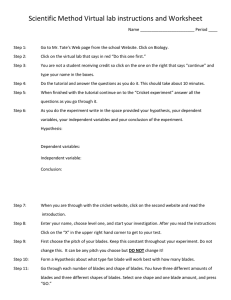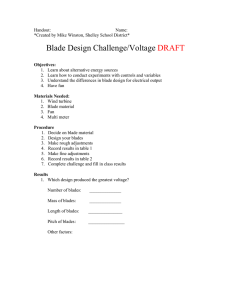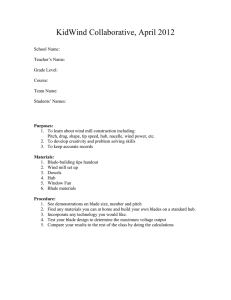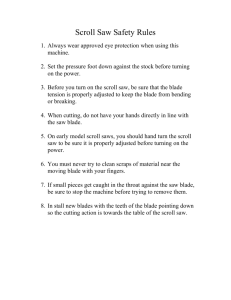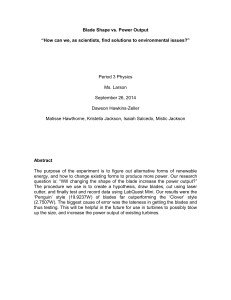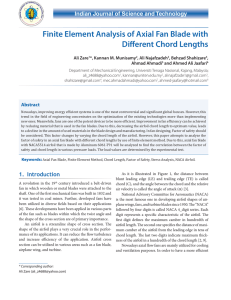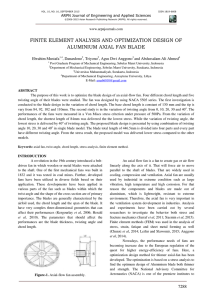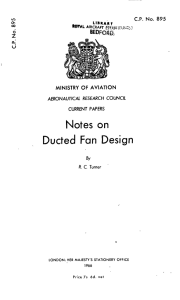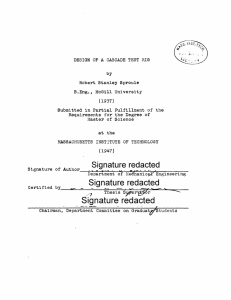Experiment
advertisement
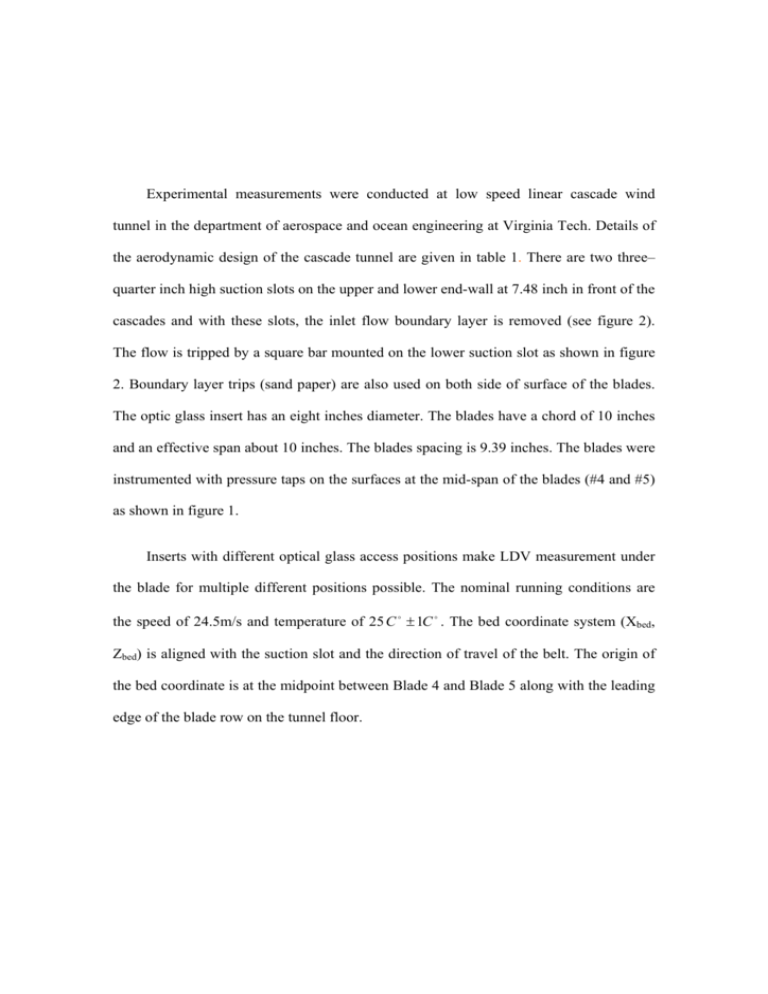
Experimental measurements were conducted at low speed linear cascade wind tunnel in the department of aerospace and ocean engineering at Virginia Tech. Details of the aerodynamic design of the cascade tunnel are given in table 1. There are two three– quarter inch high suction slots on the upper and lower end-wall at 7.48 inch in front of the cascades and with these slots, the inlet flow boundary layer is removed (see figure 2). The flow is tripped by a square bar mounted on the lower suction slot as shown in figure 2. Boundary layer trips (sand paper) are also used on both side of surface of the blades. The optic glass insert has an eight inches diameter. The blades have a chord of 10 inches and an effective span about 10 inches. The blades spacing is 9.39 inches. The blades were instrumented with pressure taps on the surfaces at the mid-span of the blades (#4 and #5) as shown in figure 1. Inserts with different optical glass access positions make LDV measurement under the blade for multiple different positions possible. The nominal running conditions are the speed of 24.5m/s and temperature of 25 C o ± 1C o . The bed coordinate system (Xbed, Zbed) is aligned with the suction slot and the direction of travel of the belt. The origin of the bed coordinate is at the midpoint between Blade 4 and Blade 5 along with the leading edge of the blade row on the tunnel floor. Figure 1 Test section of the linear cascade tunnel Figure 2 Side view of the test section of the linear cascade tunnel Table 1 Parameters of the cascade blades Blade section GE rotor B section Blade number 8 Chord length 25.4 cm Inflow angle 65.1° Stagger angle 56.9° Pitch 0.929 of the chord Span 1.0 of the chord Axial Chord length (Ca) 13.868 cm Passage width 23.6 cm Renolds number based on the chord Tip gap height 4.03 x l05 0.0165 of chord

